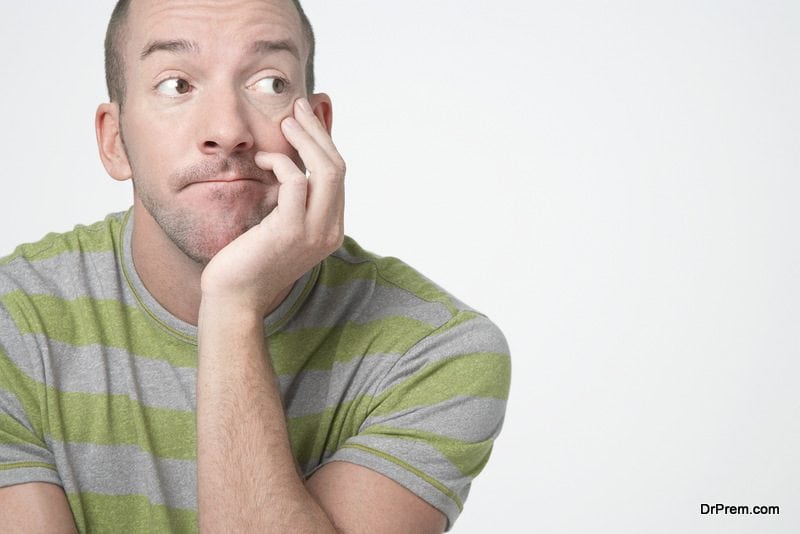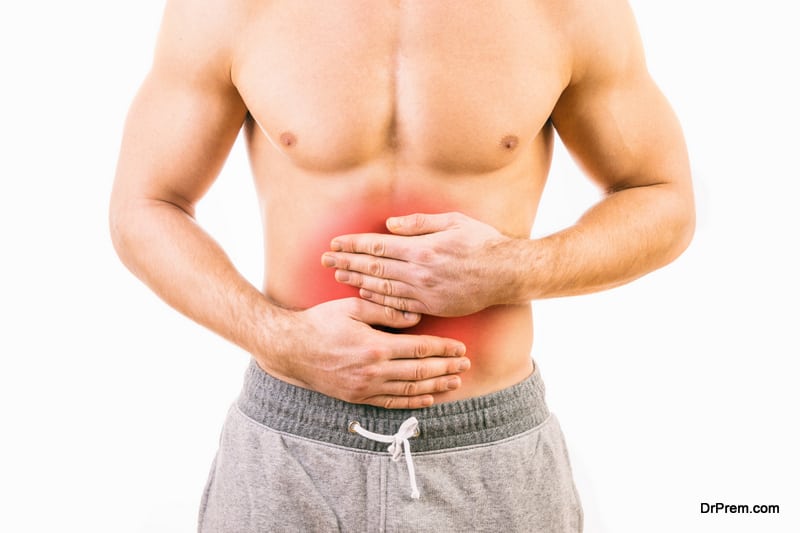People say age is just a number and although that might be true for your mental state, your body might have different ideas. For men, reaching the age of 40 can mark some pretty big changes for their physical health and well-being. Here are 6 ways that the male body changes after 40 and how to counteract them.
1. Wrinkles
 The appearance of wrinkles isn’t reserved just for women. Men experience facial wrinkles as well, and they become more noticeable after the age of 40. The damage that skin undergoes over time affects men and women alike. These changes include decreased elasticity, increased dryness, and the inability to regenerate following sun damage and other external factors. All of these things combined lead to the appearance of lines, creases, and wrinkles throughout the skin. These wrinkles are most prominent around the eyes and mouth. Why? Because many of these lines and creases are actually a sign of happiness due to excessive smiling and laughing. It’s also been reported that men with wrinkles may appear more distinguished, spontaneous, and authentic. If you want to reduce the appearance of wrinkles, there are plenty of moisturizers available to do just that. Also, stay away from smoking, which can intensify wrinkles and speed up the skin’s natural aging process.
The appearance of wrinkles isn’t reserved just for women. Men experience facial wrinkles as well, and they become more noticeable after the age of 40. The damage that skin undergoes over time affects men and women alike. These changes include decreased elasticity, increased dryness, and the inability to regenerate following sun damage and other external factors. All of these things combined lead to the appearance of lines, creases, and wrinkles throughout the skin. These wrinkles are most prominent around the eyes and mouth. Why? Because many of these lines and creases are actually a sign of happiness due to excessive smiling and laughing. It’s also been reported that men with wrinkles may appear more distinguished, spontaneous, and authentic. If you want to reduce the appearance of wrinkles, there are plenty of moisturizers available to do just that. Also, stay away from smoking, which can intensify wrinkles and speed up the skin’s natural aging process.
2. Changes in Hair Growth
Although hair loss is a common issue for men over the age of 40 and is attributed to aging, some men will experience increased hair growth in less desirable places like their ears and nose. Men might even see increased hair growth on their backs and chin. The good news is, this is an easy fix for most. Investing in a trimmer or a pair of small scissors can help quickly eliminate unwanted hairs for men. On the flipside, men might experience thinning hair or hair loss on their heads after the age of 40. Hair loss is often caused by a hormonal imbalance that occurs in both men and women over 40. Stress along with genetics and diet may also be to blame. Men over 40 will also see changes in their hair color. Gray hairs can appear in people as young as 30 but they become increasingly visible after the age of 40 and well into a person’s 50s. There are several ways to address gray hairs but the most common remedy is hair coloring and dying.
3. Low Libido
 No one wants to think they have a low sex drive, but unfortunately, when men reach the age of 40, things in the sexual department can quickly change. Many factors can impact low sex drive including a low-testosterone. Not only can men experience low libido but other complications like erectile dysfunction (ED), increased time to achieve an erection, inability to keep an erection, and increased time between erections. But low libido doesn’t mean the end to a healthy sex life. Maintain open lines of communication with your partner and be patient. Stress can negatively impact your sex drive as well. There are many medications on the market for treating ED and low testosterone levels. You can also read more here about how to naturally boost male libido.
No one wants to think they have a low sex drive, but unfortunately, when men reach the age of 40, things in the sexual department can quickly change. Many factors can impact low sex drive including a low-testosterone. Not only can men experience low libido but other complications like erectile dysfunction (ED), increased time to achieve an erection, inability to keep an erection, and increased time between erections. But low libido doesn’t mean the end to a healthy sex life. Maintain open lines of communication with your partner and be patient. Stress can negatively impact your sex drive as well. There are many medications on the market for treating ED and low testosterone levels. You can also read more here about how to naturally boost male libido.
4. Increased Aches and Pains
Aches and pains are a common part of aging. Years of wear and tear on the body add up over time. This is often felt in the joints, muscles, back, and neck. There are several ways to treat and prevent aches and pains brought on by aging. Taking care of your body, maintaining a healthy weight, and staying active both before and after the age of 40 is crucial. Often, young athletes who play contact, high-impact sports are at risk for greater injury. Those injuries experienced at a young age can cause increased complication as you age. Avoid the “forever young” mentality and taking unnecessary physical risks. It’s important to remain active through daily physical exercise. Incorporate strength training and stretching into your cardio routines. Maintaining a healthy weight will also reduce pressure and strain on your joints. Visiting a massage therapist or chiropractic can also address stiffness, alignment, and other muscular issues.
5. Prostate Issues
 Checking your prostate is extremely important for men over the age of 40. Your doctor will check your prostate at your annual physical. That’s because prostate growth after 40 is a real issue and one that can create serious health complications down the road. The most common sign of this type of cancer is an enlarged prostate. But what makes this diagnosis difficult is that the male prostate naturally starts growing at the age of 25. This growth, known as BPH (benign prostatic hyperplasia), is unrelated to cancer but has its own set of symptoms to watch for. These include trouble urinating, a weak stream of urine, the need to push or strain yourself while going, and dribbling urine. If these symptoms arise prior to your 40th birthday, be sure to call your doctor for a prostate check.
Checking your prostate is extremely important for men over the age of 40. Your doctor will check your prostate at your annual physical. That’s because prostate growth after 40 is a real issue and one that can create serious health complications down the road. The most common sign of this type of cancer is an enlarged prostate. But what makes this diagnosis difficult is that the male prostate naturally starts growing at the age of 25. This growth, known as BPH (benign prostatic hyperplasia), is unrelated to cancer but has its own set of symptoms to watch for. These include trouble urinating, a weak stream of urine, the need to push or strain yourself while going, and dribbling urine. If these symptoms arise prior to your 40th birthday, be sure to call your doctor for a prostate check.
6. Slower Metabolism
Your mobility isn’t the only thing that slows down as you age. After the age of 40, your metabolism slows, which can lead to increased weight gain. When your metabolism slows down, your body is burning less calories than it once did. It’s important to counteract this metabolic slow down with increased activity and a healthy diet. There are a few factors that determine the speed of your metabolism:
- Exercise (the calories you burn through exercise and purposeful activity)
- Non-exercise activity thermogenesis (the calories you burn doing non-active things like standing, household chores, driving, etc.)
- Resting metabolic rate (the calories you burn while sleeping or resting)
- Thermic effect of food (how many calories you burn through natural digestion and food absorption)
Don’t be fooled into thinking that lightening speed metabolism of your teens and 20’s will follow you through into middle-age. Sadly, your metabolism will naturally slow down, making it harder to lose weight and harder to keep it off. You’ll need to make changes in your diet and exercise routine in order to maintain a healthy weight, which will benefit your overall health.
The age of 40 doesn’t mean the end of a healthy, active life. In fact, after the age of 40, eating healthy and remaining physically active is more important than ever. Being aware of these common body changes for men can help prevent health complications later in life.
Article Submitted By Community Writer




